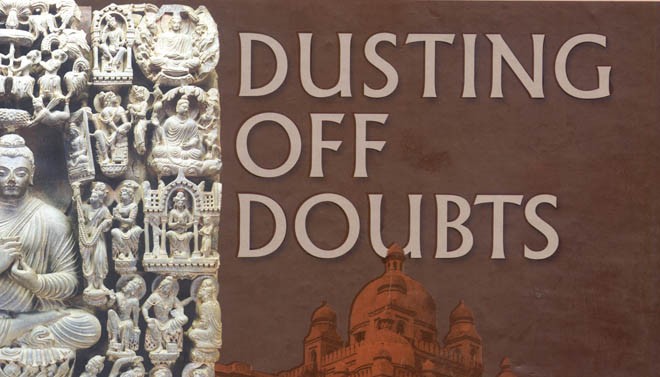
An objective study of the documentation system followed in the Lahore Museum since its foundation in 1867

Lahore Museum’s collection of Gandhara sculptures is glorious, and the most spectacular and diversified of Buddhist sculptures from Gandhara anywhere in the world. It was built over one hundred and fifty years, although for about half a century this collection has been static but its charming glory has never waned.
Poorly-documented, it required dedication and exhausting regimen to complete the task with a degree of satisfaction and Saifur Rahman Dar seemed to be the best person to execute it. He had served as director of Lahore Museum for many years, actually 24 years, from 1974 to 1998, and felt the importance of this documentation and kept working on it. A small part of the study was published in 1992 but after retirement when in New York while visiting his daughter, being homebound due to heavy snow and all alone, he was in a way forced as he had no choice but to concentrate on the work that he had started. His efforts resulted in the book updated with documentation and its verification till 2007.
This study highlights the positive and the negative aspects of the system of documentation of different collections in this museum since its foundation in 1867. Accuracy and prompt accessibility of original documentations goes a long way in the history of such collections for it helps interpret the meaning and reconstruct cultures to which they belong. The collection has never been properly documented, nor accessioned in detail, catalogued or its photographic record, which was once quite extensive and comprehensive, kept intact. The study reveals that the documentation system followed by the museum staff right from the beginning was inadequate, unscientific, skeletal and in more than one way defective.
The physical verification of the collection including the Gandhara collection was first carried out in 1942, 75 years after its establishment. Since then the staff took good care of the collection but the subsequent physical verifications of 1999 and 2001 could not be considered technically very sound. There have been rumours galore that massive thefts have taken place in the museum. It has been reported cursorily that the invaluable collection has been palmed off at exorbitant prices by those who had access.
One critical period was 1947 when assets including those in the museums were divided between India and Pakistan. In the general upheaval and bloodletting much was destroyed, pilfered or misplaced, the blame laid at the door of riots, arson and looting. To the disappointment of those feasting on stories of corruption and theft, the study shows that weak and defective service structure rather than the individuals’ failure have been the major causes.
Not a single case of theft has been reported as far as the Gandhara collection is concerned.
It is also an objective study as to how this wonderful collection grew, how its documentation record was maintained from time to time, how persistently and regularly the physical verification of the collection was carried out and how did the controlling authorities react whenever any irregularity was reported.
But there appears to be scope for improvement. The reserve collection of the museum needs to be revisited more thoroughly than it has been done and it needs to be reviewed afresh on more scientific lines. A more in-depth and thorough reading of the defalcation reports of physical verification and defalcations of 1942 may prove to be useful, not only for Gandhara but for all other collections of the museums. Copies of these reports and probings, directives of Museum Development Committee and compliance reports which may still be preserved in the Punjab Archives, probing of the newly established Archival Record of the National College of Arts may yield much more opulent information than available in the skeletal reports of the Lahore Museum.
A humble beginning was made with the setting up of the Lahore Museum in 1855 at the Wazir Khan Baradari. It was named Lahore District Museum and when shifted to Tollington Market, the site of the Grand Exhibition was renamed Lahore Central Museum for the next 26 years. In 1890, the foundation of the present museum building was laid by Price Albert under the title Jubilee Museum and Technical Institute. It was designed by Lockwood and Bhai Ram Singh. The construction was funded by the amount raised from the celebration of Queen Victoria’s jubilee and was inaugurated by the Governor Punjab, Sir Robert Montgomery in 1894. In 1928, two more galleries were added. During 1965/ 1966, it was further enlarged. It continues to expand with 21 galleries open to public, an auditorium, a committee room, a large library, a functional conservation and restoration laboratory, photographic section, carpenter workshop, a gift shop, a book shop, a public restaurant and a big office block.
The Lahore Museum is also very famous for its miniature and coin collection. Other than the fact that this study ends at 2007, another 10 years have gone by and so serious effort or exercise has been carried out since then to verify this Gandhara collection as well as the others collections mentioned above.
Perhaps the author should take the next big step and carry out in full what he started to do himself. Despite his age, Dr. Dar seems full of enthusiasm and still very involved with what has always interested him.